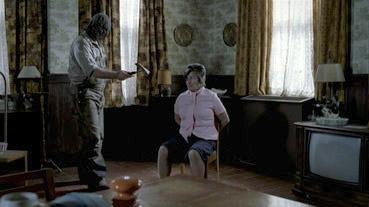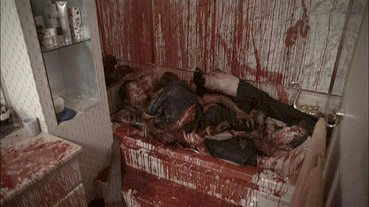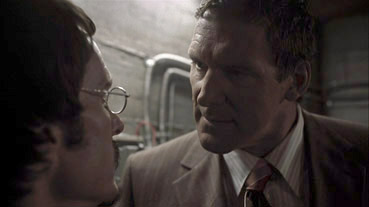|
If the name Uwe Boll is new to you then you've missed out on a cinematic social phenomenon of our times. As it happens, you may well be glad of that. Boll is, in the true sense of the word, a notorious figure. A German born director who has made his name in the US and Canada with self-funded projects, his body of work consists mainly of dark thrillers with a horror leaning and a number of video game adaptations, including House of the Dead (2003), Alone in the Dark (2005), BloodRayne (2005) and In the Name of the King: A Dungeon Siege Tale (2007), films that have been almost universally panned and have prompted wails of despair from fans of the games they are supposedly based on.
The unpopularity of his work has become the stuff of film legend. At the time of writing, he has completed fifteen films as a director and an astonishing six of those are in the IMDb bottom 100, more than any other filmmaker living or dead has ever registered. But that's not all. He has another four hovering just outside the list with user scores ranging from 2.4 to 2.8, and in what appears to be a sizeable clerical error on the part of the IMDb staff, his 1991 co-directing debut German Fried Movie, although not found on the list, has a rating of just 1.3, which puts it on equal footing with the film at the very bottom, the staggeringly unpopular Disaster Movie, made by Scary Movie writers Jason Friedberg and Aaron Seltzer.

And there's more. Openly confronting the critical pasting he has received from many quarters, in June 2006 Boll challenged five of his fiercest critics to a series of boxing matches, a stunt the media dubbed 'Raging Boll'. Astonishingly, they accepted. Boll beat the lot of them. Video game devotees, meanwhile, began an on-line petition to demand that Boll stop making movies. A contemptuous Boll responded by claiming that if a million people signed up to it then he would retire. The electronic signatures began flooding in. At the time of writing they were up to 315,290.*
And still there's more. In direct reaction to the petition, Boll suggested that if you looked at his movies properly you would see his real genius, and labelled directors Michael Bay and Eli Roth "fucking retards." Roth laughed it off, but the subsequent war of words between Boll and Bay climaxed with Boll challenging Bay to a boxing match to decide once and for all who was the better filmmaker.** Personally I think that's a difficult call.
The 2007 Seed is one of the six films on the bottom 100 list, though at #91 is the most favourably placed. How much of that rating is influenced by a cumulative hatred for Boll's movies in general is hard to say. There are, after all, worse acted, worse directed and conceptually stupider movies out there. But for all that and in spite of my sneaky affection for Boll the filmmaking lunatic, and my belief that he will one day be the subject of a most entertaining movie himself, Seed is still supremely naff on a number of fronts.
Seed, in case you were wondering, is the name of a prolific serial killer with a grim past who sports a crudely made mask to cover his facial disfigurement. No, we're not going to be scoring points for originality here. He taunts the police by sending them a video of animals he has trapped and stop-motion footage of their carcasses rotting away after their deaths. When the victims expand to include a young woman and a baby, the police really start to sit up and take notice. Detective Bishop is particularly upset by this. After all, he has a young wife and daughter, so the death of humans tends to get to him. Fortunately, the cops seem to know where Seed lives, in an old wooden house on a desolate road that's not on any map. Bishop takes a few patrolmen with him in the dead of night to check the place out. The patrolmen all meet violent ends, but Bishop gets his man and drags him off to jail to pay for his crimes. Seed is sentenced to death, but wouldn't you know it, the prison he's in is in dire need of a new electric chair to replace the faulty one they've been limping along with. Telling you that Seed takes three noisy and extended jolts and doesn't die is no spoiler, as there's an opening caption that pretty much reveals this is going to happen sooner or later. Bishop and the ox of a prison governor decide to bury him anyway, but he's a tough bastard and claws his way out of the grave to wreak revenge on those who have done him this terrible wrong.

On paper, this is standard slasher movie fare, but even when Boll gets close to showing some flair there's usually something on hand to bugger it up. Take the night-time raid on Seed's isolated abode. The house and its cellar are dark and sinister in that post-Texas Chainsaw hillbilly way and completely robbed of light from either moon or electricity. What Boll does right that so many filmmakers get wrong is to arm his cops with torches and make them the only source of illumination, restricting our vision along with theirs. So it's scary, right? Well it might be if we had just a speck of emotional investment in the characters and they behaved like cops in a dangerous situation instead of idiot teenagers lost in the woods. Even leading man Bishop is at this point little more than a shape with a face, and having this boring lunk shed a tear at the aforementioned video footage does not instantly transform him into a figure of empathy.
It's also here that the film's schizophrenic attitude to its violence is established. Cop #1 dies when a booby-trap puts a pick-axe through his head in a swipe of quicker-than-the-eye CG, but his colleagues are killed in a blur of unlit something-or-other, which should quickly silence the whoops from the slasher crowd. The inconsistency continues when Seed attacks Bishop, and the ruthless violence employed just moments before is put temporarily on hold in favour of a feeble lunge that easily allows the angry Detective to push him over and arrest him.
It was inevitable with the rise of realistic CG that sooner or later it was going to be employed to show us violence we could have happily lived the rest of our lives without seeing. Boll rises to the occasion with a stand-alone set-piece in which a woman tied to a chair is slowly and meticulously beaten about the head with a hammer, the blows steadily increasing in ferocity until all that remains is a bloody pulp and the walls and windows are covered in her blood, a process observed in real time in an unbroken five-minute wide shot. Although bombastically scored, as a technical exercise it's startling in its realism, and as a result proves increasingly difficult to sit through. You could argue that this was Boll's intention, of course, to subject us to a sequence in which we are forced to directly confront our relationship to screen violence by showing us exactly what it means to inflict such destruction on a fellow human being. Yeah, right. I buy that about as readily as I buy the opening claim that the film is making a statement about humanity, a caption added in a woefully unconvincing and frankly offensive attempt to justify the truly horrible real-life footage that follows of dogs being killed and skinned alive.
It's no doubt this sort of thing that secured the film its place in the IMDb bottom 100 rather than its muddy plot development, cack-handed direction, increasingly wobbly camerawork, chronically undeveloped characters and wooden performances, all of which you'll find in any number of deadly direct-to-video masterpieces. Indeed, now and then there are momentary flashes of the better retro-slasher Boll clearly had ambitions of making. But they're few and far between, and for all its CG violence and twisted morality, Seed's most notable quality is that it is, for the most part, numbingly dull.
I may not like the movie but I've no problems with the picture quality, a largely top notch 1.78:1 anamorphic transfer in which the detail is sharp without obvious evidence on enhancement, the contrast is just right and the colours, though deliberately muted, feel true. It's pretty dark, but that's deliberate and only occasionally is information lost to the gloom.

There are optional Dolby 2.0 stereo and 5.1 surround soundtracks and the clarity and mix quality of both is very good. The surrounds are well used on the 5.1 track, neatly placing squeaking rats or floorboard creaks behind the viewer's head and rain all around the room. The dynamic range is as strong as you'd expect.
Trailer (1:29)
An effectively dark and suggestive trailer with a couple of plot giveaways. Like that will make a difference.
Behind the Scenes (10:00)
A mildly interesting but insubstantial glimpse of the crew at work on the execution scene.
Hard to recommend to anyone but dedicated horror obsessives, who may well tolerate the muddled plotting and ham-fisted handling to revel in the nastiness of the violence. Those already familiar with the cinema of Uwe Boll will take some serious persuading to even go near this one, but if you're looking for an introduction the man some have dubbed the worst director working today, then be my guest. Oh well, at least the picture and sound deliver.
* The petition later closed without hitting its target.
** If you're really interested to you can watch a short documentary on Raging Boll on YouTube here and clip of Boll punching out a life-size cut-out of Michael Bay here. You'll find plenty more Boll related clips there.
|